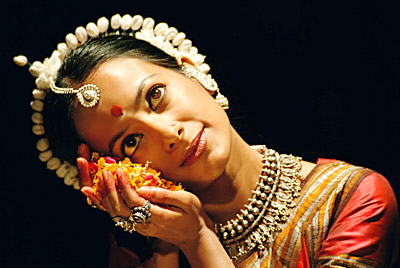By Somrita Ghosh
New Delhi– There is a sublime connection between classical dance forms and yoga, be it in the body movements or the association of mind and soul. But danseuse Rekha Tandon believes that the links between these two traditions haven’t been explored and much needs to be done on this score.
“Dance and yoga are, and have always been, integrally related in the Indian tradition. What surprises me is that the connection between these two areas of knowledge is not commonly acknowledged,” Tandon, a choreographer and researcher in Odissi, told IANS in an email interview.
And to illustrate the long association between yoga and Odissi, Tandon has come up with a book titled “Dance As Yoga” (Niyogi Books, Rs 1495, pp 224), which talks about the deep-rooted connection between these two traditions.

“I have been blessed with opportunities to explore Odissi from so many different perspectives. The book is a means of sharing this and of distilling my own experiences,” Tandon commented on her reason for writing the book.
Tandon’s book addresses the background, technique and embodiment of the Odissi dance form. It describes Odissi’s mechanism for creating, dispersing and expressing energy as well as some early experiments in choreography that extended its accepted parameters with reference to Choreological Studies.
Tandon’s association with this classical dance form goes a long way back. She remembered that her passion for Odissi grew by watching beautiful performances of many eminent artists and gurus during her school days in Delhi. From a very young age, she almost became a regular visitor to the theatres which planted the seeds of her interest towards Odissi.
“I lived close to Mandi House in the 1980s and had free and easy access on my bicycle to Kamani, Sapru House, Little Theatre, Triveni Kala Sangam, Jhankar Theatre (no longer there) etc., every evening. This was such an eye-opening and heart-opening education for me,” Tandon recollected.
On the connection between Odissi or other forms of dance with yoga, Tandon said that both have evolved through a similar process, which makes them stand on the same platform but only to be left undiscovered.
“Yoga aims at understanding the essential nature of the body, mind and spirit through meticulous, systematic and incremental self-awareness. Excellence in any classical Indian dance technique is arrived at through a similar process. So they are very close together, and this fact is not confined to Odissi dance,” said the classical dancer, who is also the co-founder and artistic director of “Danceroutes”.
Tandon, who currently works out of Skandavan in Auroville, graduated in architecture from New Delhi’s School of Planning and Architecture. She completed her masters in History of Art from the National Museum and later went on to pursue a PhD in Dance Studies from Laban in London. And it was during her days in Laban that the idea of writing the book came up.
“I had started and stopped on drafts of this manuscript several times after my PhD at Laban in 2005, but life, running a repertory company, moving to Auroville’s neighbourhood and building Skandavan, kept taking over and I never managed to find the mental space to focus on it. The final spate of writing took a few months,” she said.
There have been many memorable moments while writing the book, but Tandon particularly remembers one incident in November 2015 when she suffered a knee injury that forced her to stay away from the dance floor.
“I realised that all the work I had done through yoga and dance in training the body, now had to be adapted to training and disciplining the mind. The body and mind were continuous aspects of each other. Writing was an invaluable way to free the mind,” Tandon noted.
Asked which classical dancer she admires the most, she said: “Guru Kelucharan Mohapatra… but I admit I have to be biased!” (IANS)














